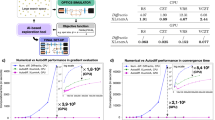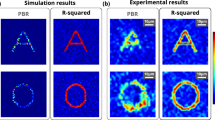Abstract
THE Sandaleak–Philip optical candidate for LMC X-4 (ref. 1) has been reported by Chevalier and Ilovaisky2 to be part of a 1.4-d binary system. Six days of data taken from an extended Ariel V observation of the LMC are shown in Fig. 1 and X-ray eclipses 5 h long can be clearly discerned every 1.4 d. The predicted optical phase zero times are, within the uncertainties, in good agreement with the observed mid-eclipse times, thus confirming the identification and making this the first X-ray eclipsing binary system to be found in the LMC.
This is a preview of subscription content, access via your institution
Access options
Subscribe to this journal
Receive 51 print issues and online access
$199.00 per year
only $3.90 per issue
Buy this article
- Purchase on SpringerLink
- Instant access to full article PDF
Prices may be subject to local taxes which are calculated during checkout
Similar content being viewed by others
References
Sandaleak, N. & Philip, A. G. D. IAU Circ. No. 3023 (1977).
Chevalier, C. & Ilovaisky, S. A. Astr. Astrophys. 59, L9 (1977).
Giaconni, R. et al. Astrophvs. J. 178, 281 (1972).
White, N. E., Davison, P. J. N. & Carpenter, G. IAU Circ. No. 3100 (1977).
White, N. E. & Carpenter, G. Mon. Not. R. astr. Soc. (submitted).
Epstein, A. et al. Astrophvs. J. 216, 103 (1977).
Author information
Authors and Affiliations
Rights and permissions
About this article
Cite this article
WHITE, N. Discovery of eclipsing nature of LMC X-4. Nature 271, 38–40 (1978). https://doi.org/10.1038/271038a0
Received:
Accepted:
Published:
Issue date:
DOI: https://doi.org/10.1038/271038a0
This article is cited by
-
Spectral properties of the X-ray binary pulsar LMC X-4 during different Intensity states
Journal of Astrophysics and Astronomy (2002)
-
TeV emission from close binaries
Space Science Reviews (1995)



